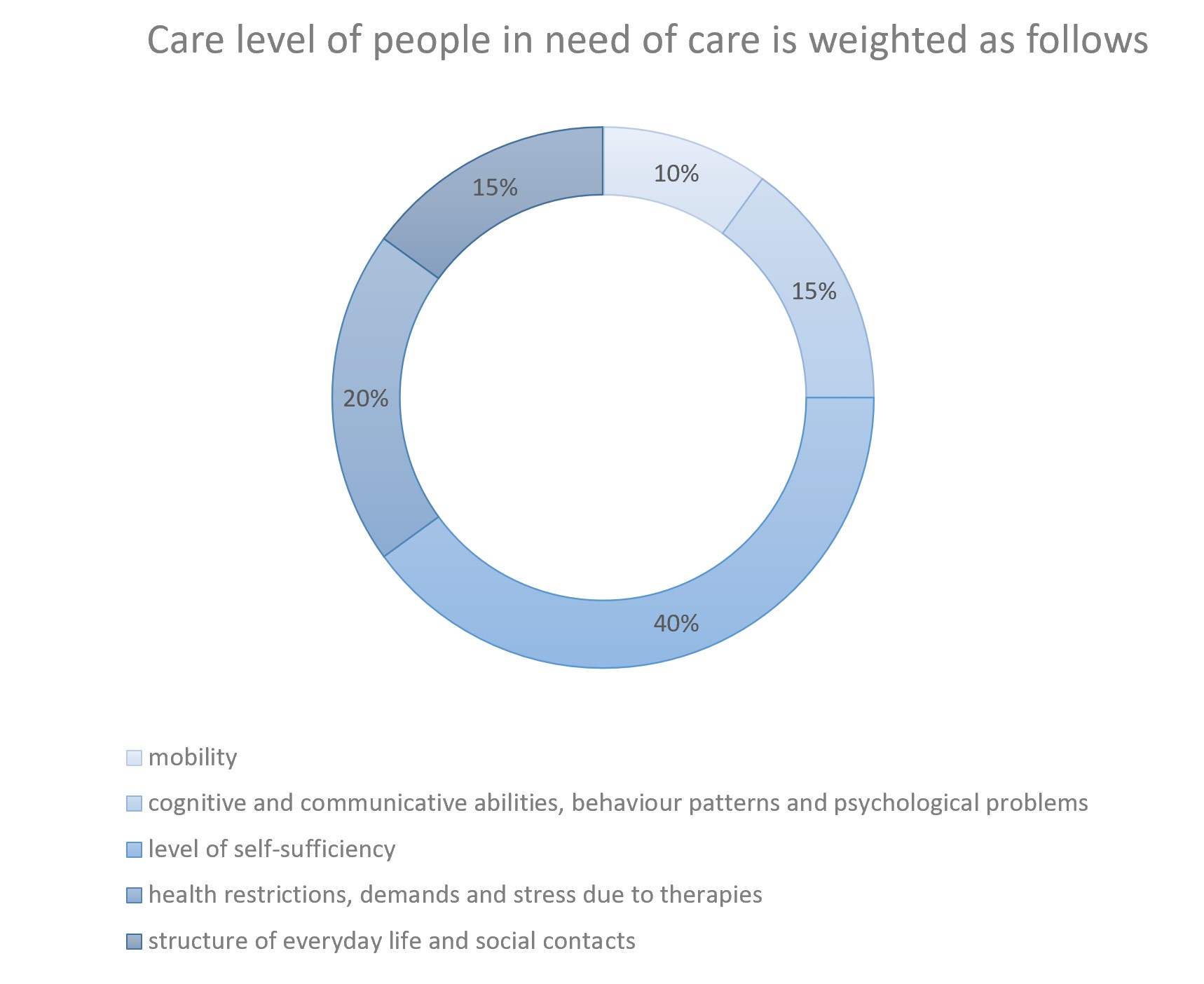Who is eligible for the long-term care in Germany?
In our previous post, we talked about the long-term care system and then LTC expenditure and LTCI in Germany. In this post, we are going to talk about that in more detail.
People with physical, mental or psychological illness or disability are eligible for LTC.
According to data collected from the 2021 Long-Term Care Report “they require frequent or substantial assistance with a specific set of activities of daily living and instrumental activities of daily living for an estimated period of six months or longer. All dependent people (children with disabilities, adults and older people) are eligible for the LTCI care scheme, irrespective of their age. If people in need of care are not able to cover out-of-pocket payments according to the legal provisions, social protection systems would cover the full cost of LTC. Regular LTCI benefits do not differ between regions and are not limited in time”
Long-term care benefits (at home or in a nursing home) are offered based on care level (on the basis of physical, mental and psychological disabilities) and the care arrangements. Benefit availability was considerably expanded since 2017. Care level of people in need of care is determined by the degree of the individual’s autonomy, which is weighted as follows: (Figure 1)
Figure 1.

Care level (Pflegestufe) is determined by the Medical Services of the Statutory Health Insurance Funds (Medizinischer Dienst der gesetzlichen Krankenversicherung – MDK) or by its private peer.
Care arrangements
There are three different arrangements for care recipients.
1- Care allowance: The care recipients live at home and their relatives look after them.
2- Home care: Home care service visits the care recipient at home routinely. Care costs are paid by LTCI and up to a fixed amount according to the care level.
3- Residential care: The care recipients stay in a nursing home and receive care day and night.
Expenses for basic care, social support and treatment are paid according to the care level by LTCI.According to OECD, in 2016, the number of LTC workers was 6 per 100 elderly. According to statistisches Bundesamt, in 2019, the LTC workforce amounted to 1.22 million people. More than one third of them was worked in home care and the remaining in nursing homes. About two thirds of the LTC workers work part-time.
The number of people in need of long-term care increases faster than the number of LTC workers. Germany is suffering from a shortage of LTC professionals. A big concern for LTC provision in Germany is the shortage of LTC.
The challenges of long-term care (LTC) and the most cost-effective solution
For the challenges of long-term care (LTC) which faced Germany, the author of 2021 Long-Term Care Report offers some recommendations such as:
“The number of LTC professionals must be increased considerably. In order to achieve this goal, there is an urgent need for a substantial increase in LTC wages and a significant improvement in working conditions. An important tool for improving working conditions is the development and application of an appropriate personnel assessment procedure.”
and
“Quality assurance in LTC should be further strengthened. It is also very important to ensure the provision of advice to relatives providing care. However, the quality of LTC also depends crucially on the recruitment of a sufficient number of nursing staff and their training.”
As we described in our previous posts, the most pressing challenges in nursing homes can be solved with the help of AI and robotics. The advantages of using robots in nursing homes are that they aren’t human and when nursing homes use the robots, there is no more need for a substantial increase in LTC wages and a significant improvement in working conditions. On the other hand, Quality in LTC can be assured with the help of robots.

